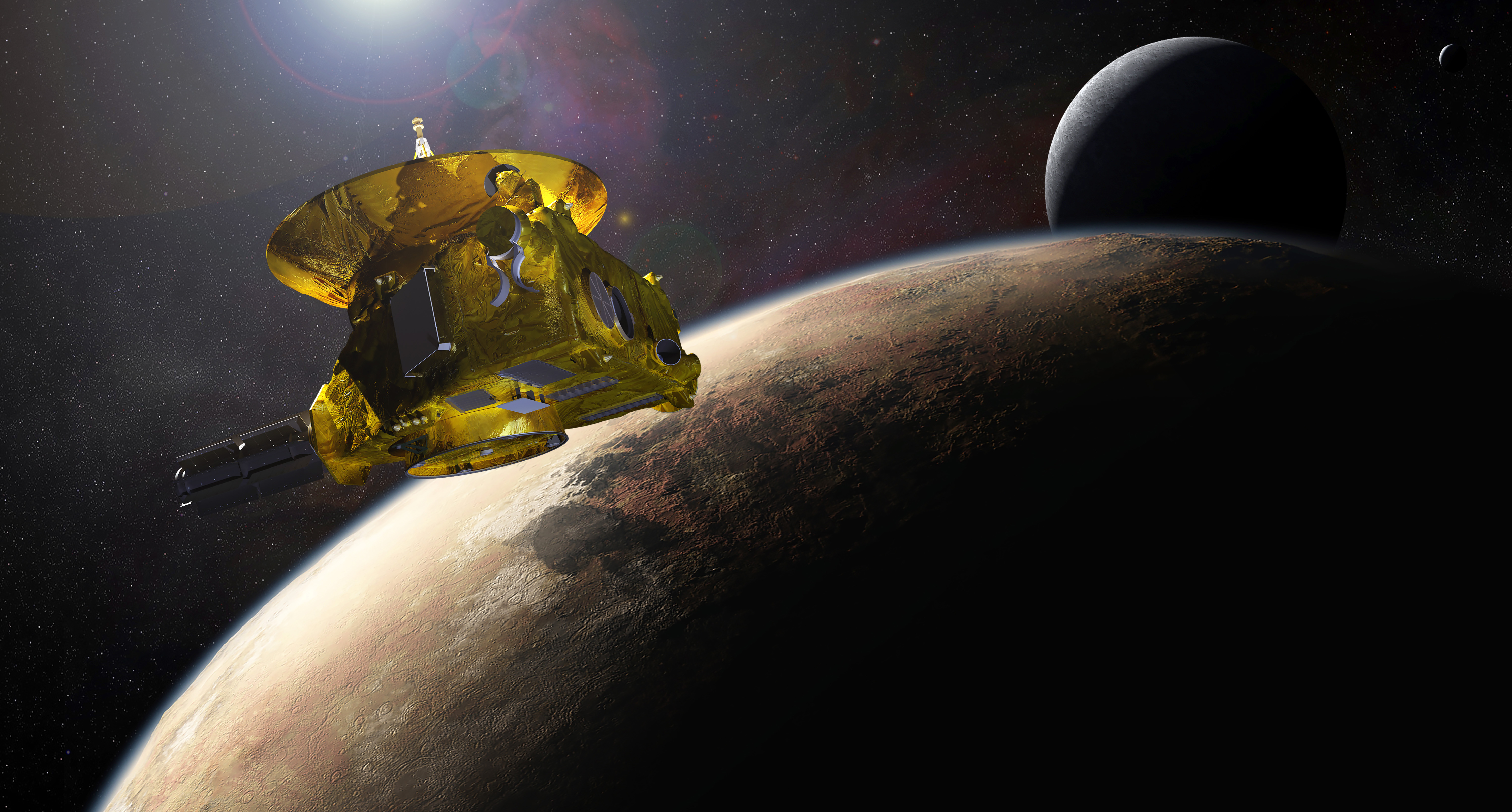
Craveology Cafe and the North Star Science Store are temporarily closed for renovation.

By Dr. Lisa Will, Resident Astronomer at the Fleet Science Center
In July 2015, New Horizons became the first spacecraft to visit Pluto. Since then, New Horizons has been continuing its journey through the Kuiper Belt, but has not passed near any other objects. All that will change on New Year’s Day 2019, when the spacecraft will fly by 2014 MU69 (informally referred to as “Ultima Thule,”) making it the new most distant solar system object to be explored up close.
At its current distance, Ultima Thule is about six light-hours away from Earth. That means data from the flyby will take approximately six hours to reach us. The spacecraft will make its closest approach to Ultima Thule on January 1, 2019, at 12:33am EST (9:33pm on New Year’s Eve for us here in San Diego), but we will not receive the images until later in the morning on New Year’s Day.
What do we hope to learn? Ultima Thule is a smaller Kuiper Belt object than Pluto, so we have pretty much everything to learn. The major objective is to map as much of the surface as possible, determine if it has moons and rings and to categorize the surface geology. This is definitely not easy to do, since Ultima Thule is so far out in the solar system and is not as well-illuminated by the sun as Pluto. This is why it is so difficult to observe from the Earth.
Good luck to the New Horizons spacecraft and team! We are wishing everyone a very happy New Year!
To keep up with the latest news about New Horizons, go to its website or follow it on Twitter.
Also, one of the mission scientists, Alex Parker, is on Twitter and does a great job of communicating the latest science! Follow him for great information on the mission.